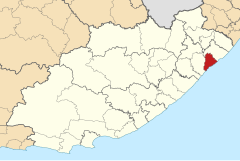HD 20644
HD 20644| 관측 데이터 Epoch J2000.0 이쿼녹스 J2000.0 | |
|---|---|
| 별자리 | 양자리 |
| 우측 상승 | 03h 20m 20.36111s[1] |
| 탈위임 | +29° 02′ 54.4451″[1] |
| 겉보기 크기 (V) | 4.47[2] |
| 특성. | |
| 스펙트럼형 | K3IIIa Ba0.5[3] |
| B-V색지수 | 1.555±0.020[2] |
| 아스트로메트리 | |
| 방사 속도 (Rv) | -3.09±0.28km[2]/s |
| 고유 운동 (μ) | RA: −7.71[1]mas/yr Dec.: −16.91[1]mas/yr |
| 시차 (π) | 6.01 ± 0.25[1] 마스 |
| 거리 | 540 ± 20 리 (105 ± 7 pc) |
| 절대치수 (MV) | −1.63[2] |
| 세부 사항 | |
| 미사 | 3.07±0.39[4] M☉ |
| 반지름 | 75.32+3.30 −7.57[5] R☉ |
| 루미도 | 1,292±89[5] L☉ |
| 표면 중력 (log g) | 2.00[4] cgs |
| 온도 | 3,987+217 −85[5] K |
| 금속성 [Fe/H] | −0.27±0.04[2] 덱스를 만들다 |
| 회전 속도 (v sin i) | 1.4km[6]/s |
| 나이 | 350±140[4] 마이어 |
| 기타 지정 | |
| 데이터베이스 참조 | |
| 심바드 | 자료 |
HD 20644는 Aries 별자리에 있는 것으로 의심되는 2진[6] 별 시스템이다.주황색 빛깔을 띠며 육안으로는 4.47의 외관상으로 볼 수 있다.[2]이 시스템은 시차(parallax)를 기준으로 태양으로부터 약 540광년 거리에 위치하지만 방사상 속도 -3km/s로 더 가깝게 표류하고 있다.[1][2]
눈에 보이는 성분은 K3의 별 분류가 현저한 노화 거성이다.IIIa Ba0.5.[3] 여기서 접미사 표기법은 이것이 순한 바륨 별임을 나타낸다.이 별의 대기는 점증하지 않는 거대한 가지(AGB)를 따라 진화했을 때 현재 백색 왜성의 동반자로부터 전이된 것으로 추정되는 s-공정 원소로 풍부하다.[8]또는 이 별 자체가 AGB에 있을 수도 있다.[9]
HD 20644는 태양 질량의 3배인[4] 약 3억[4] 5천만 년 전으로, 1.4 km/s의 예상 회전 속도로 회전하고 있다.[6]핵에 있는 수소 공급이 소진되면서 태양 반지름의[5] 75배까지 확대됐다.그것은 유효 온도 3,987 K로 광권으로부터 태양의 1,292배의[5] 광도를 방출하고 있다.[5]
참조
- ^ a b c d e f van Leeuwen, F. (2007), "Validation of the new Hipparcos reduction", Astronomy and Astrophysics, 474 (2): 653–664, arXiv:0708.1752, Bibcode:2007A&A...474..653V, doi:10.1051/0004-6361:20078357, S2CID 18759600.
- ^ a b c d e f g Anderson, E.; Francis, Ch. (2012), "XHIP: An extended hipparcos compilation", Astronomy Letters, 38 (5): 331, arXiv:1108.4971, Bibcode:2012AstL...38..331A, doi:10.1134/S1063773712050015, S2CID 119257644.
- ^ a b Keenan, Philip C.; McNeil, Raymond C. (1989), "The Perkins catalog of revised MK types for the cooler stars", Astrophysical Journal Supplement Series, 71: 245, Bibcode:1989ApJS...71..245K, doi:10.1086/191373.
- ^ a b c d e Baines, Ellyn K.; et al. (2018), "Fundamental Parameters of 87 Stars from the Navy Precision Optical Interferometer", The Astronomical Journal, 155 (1), 30, arXiv:1712.08109, Bibcode:2018AJ....155...30B, doi:10.3847/1538-3881/aa9d8b, S2CID 119427037.
- ^ a b c d e f Brown, A. G. A.; et al. (Gaia collaboration) (August 2018). "Gaia Data Release 2: Summary of the contents and survey properties". Astronomy & Astrophysics. 616. A1. arXiv:1804.09365. Bibcode:2018A&A...616A...1G. doi:10.1051/0004-6361/201833051. 이 소스에 대한 가이아 DR2 기록 VizieR.
- ^ a b c Lèbre, A.; et al. (May 2006), "Lithium abundances and rotational behavior for bright giant stars", Astronomy and Astrophysics, 450 (3): 1173–1179, Bibcode:2006A&A...450.1173L, doi:10.1051/0004-6361:20053485.
- ^ "HD 20644". SIMBAD. Centre de données astronomiques de Strasbourg. Retrieved 2019-12-22.
- ^ Yang, Guo-Chao; et al. (January 2016), "Chemical abundance analysis of 19 barium stars", Research in Astronomy and Astrophysics, 16 (1): 019, arXiv:1602.08704, Bibcode:2016RAA....16...19Y, doi:10.1088/1674-4527/16/1/019, S2CID 14474857, 19.
- ^ Mennessier, M. O.; et al. (October 1997), "Barium stars, galactic populations and evolution", Astronomy and Astrophysics, 326: 722–730, Bibcode:1997A&A...326..722M.


